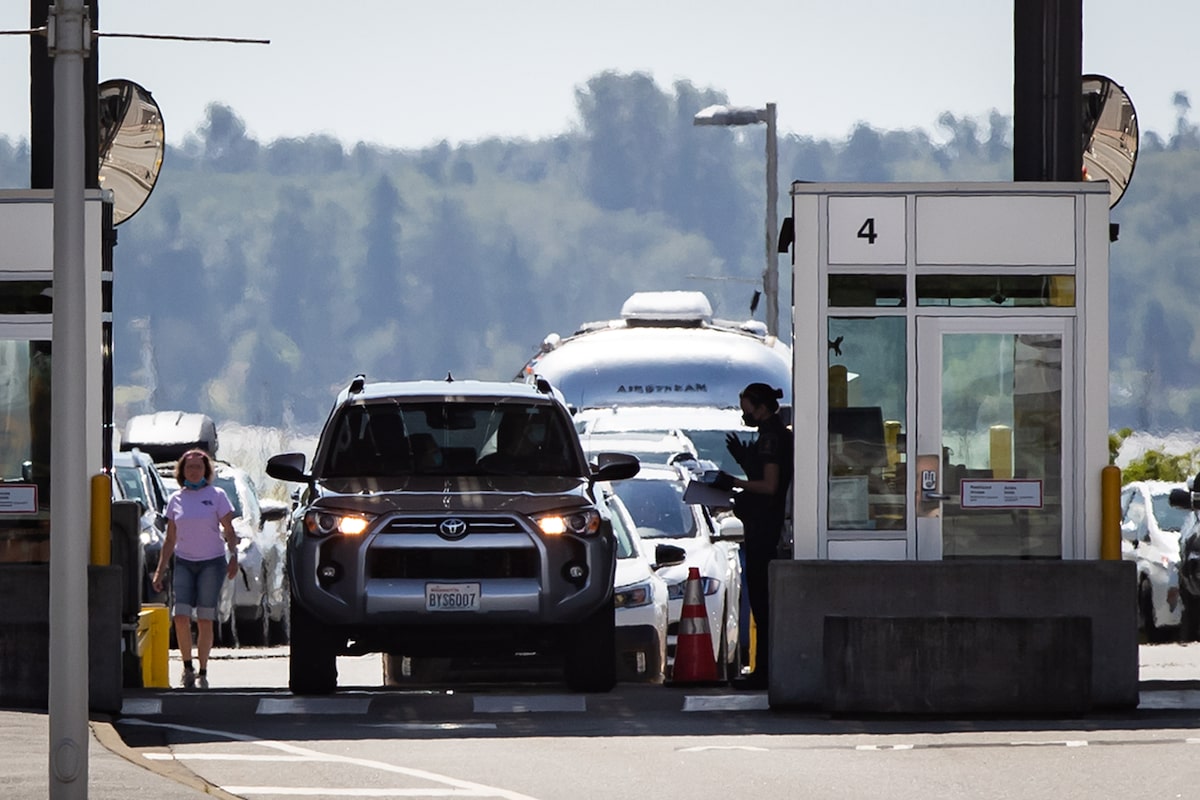A border officer speaks to a driver entering Canada at the border crossing in Surrey, B.C., in August, 2021. Based on the licence plates of residents returning to Canada, PEI is boycotting U.S. travel the hardest, followed by B.C. and Quebec.DARRYL DYCK/The Canadian Press
Canadians across the board have been staying away from the U.S. border, but not all travel boycotts are equal, and some provinces have cut back on trips to the U.S. more than others.
In September, Canadian residents made 35 per cent fewer trips to the U.S. than the year before, according to Statistics Canada, part of a months-long backlash against U.S. President Donald Trump’s actions and rhetoric targeting Canada.
Based on the licence plates of residents returning to Canada, the province boycotting the hardest is Prince Edward Island, where residents slashed vehicle trips to the U.S. by more than half, followed by British Columbia and Quebec.
Meanwhile, Ontario, with arguably the most boisterous, flag-waving, U.S.-booze-dumping provincial leader in the country in Premier Doug Ford, saw the smallest year-over-year decline in U.S. ground travel. The number of residents in Ontario licence-plated vehicles returning to Canada fell by just under 30 per cent last month from the year before.
Alberta and Saskatchewan vehicles experienced the second- and third-smallest declines.
Canadians made three million fewer trips to the U.S. during summer travel boycott
This winter, Canadian snowbirds may take flight back to the U.S.
A few things could explain why Ontarians may be relatively more willing to continue travelling to the U.S. than other provinces, namely the province’s close geographic and commercial ties to major U.S. urban centres. The figures don’t cover air travel.
In fact, travel at Canada’s busiest border crossing, between Windsor and Detroit, remains brisk, with the number of returning Canadian vehicles slumping by just 13 per cent in September from the year before. That makes sense when you consider the thousands of Windsor-area residents who cross the border daily to their jobs in Detroit, particularly in the health care sector.
It’s worth noting these vehicle counts include only automobiles, motorcycles and other licensed land vehicles such as snowmobiles, so the steady flow of commercial trucks crossing Ontario’s busy borders is not included.
Indeed, separate border data from Statscan show the number of Ontario-licensed trucks returning from the U.S. in September was little changed from the year before.
Decoder is a weekly feature that unpacks an important economic chart.

